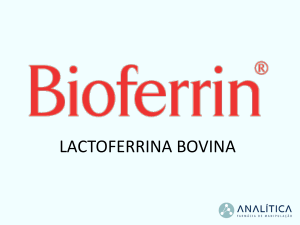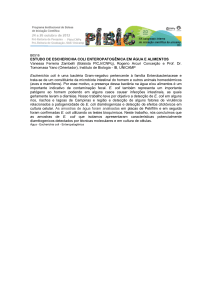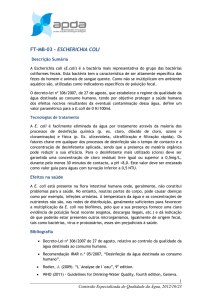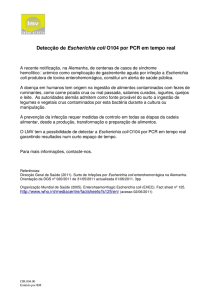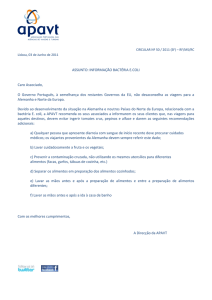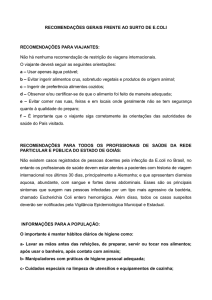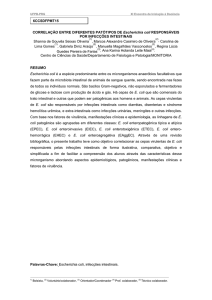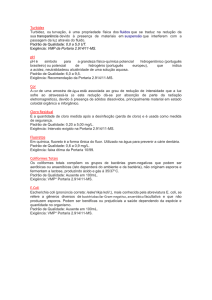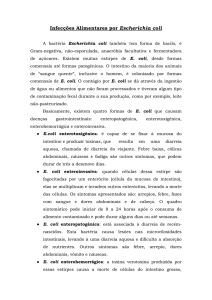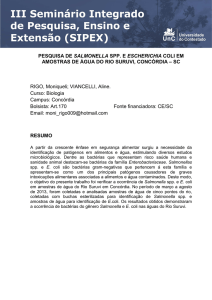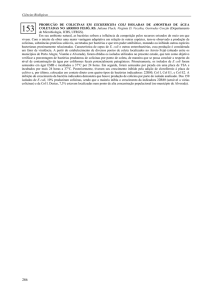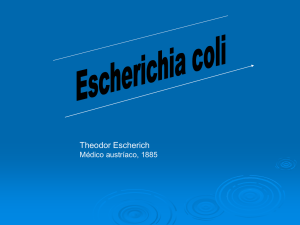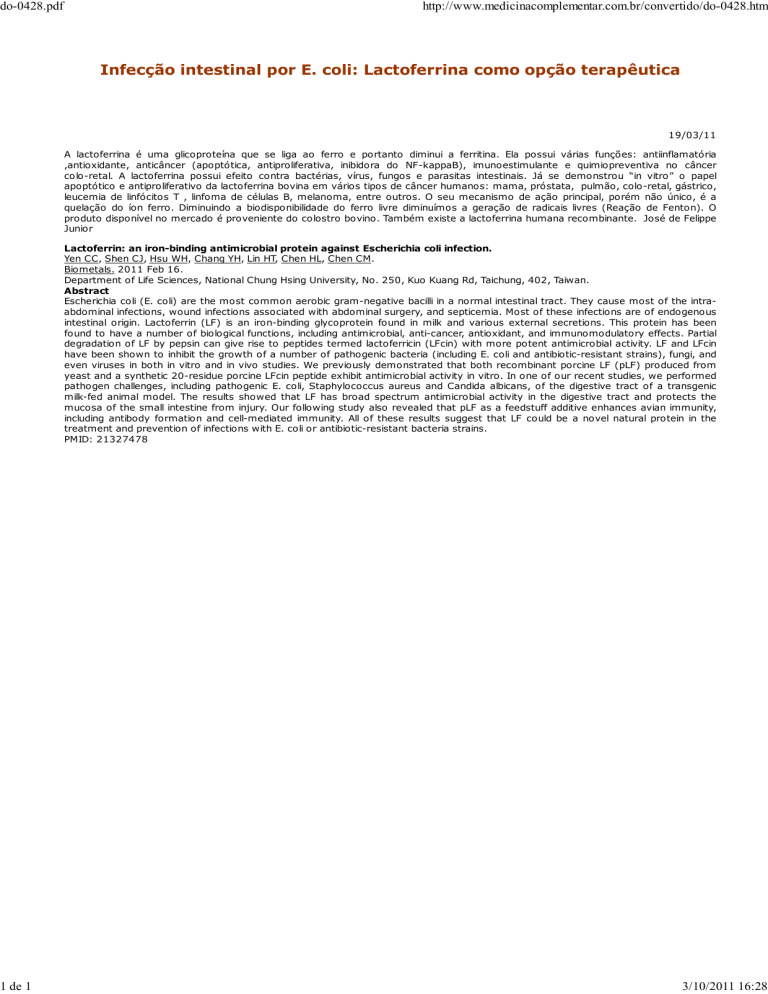
do-0428.pdf
1 de 1
http://www.medicinacomplementar.com.br/convertido/do-0428.htm
Infecção intestinal por E. coli: Lactoferrina como opção terapêutica
19/03/11
A lactoferrina é uma glicoproteína que se liga ao ferro e portanto diminui a ferritina. Ela possui várias funções: antiinflamatória
,antioxidante, anticâncer (apoptótica, antiproliferativa, inibidora do NF-kappaB), imunoestimulante e quimiopreventiva no câncer
colo-retal. A lactoferrina possui efeito contra bactérias, vírus, fungos e parasitas intestinais. Já se demonstrou “in vitro” o papel
apoptótico e antiproliferativo da lactoferrina bovina em vários tipos de câncer humanos: mama, próstata, pulmão, colo-retal, gástrico,
leucemia de linfócitos T , linfoma de células B, melanoma, entre outros. O seu mecanismo de ação principal, porém não único, é a
quelação do íon ferro. Diminuindo a biodisponibilidade do ferro livre diminuímos a geração de radicais livres (Reação de Fenton). O
produto disponível no mercado é proveniente do colostro bovino. Também existe a lactoferrina humana recombinante. José de Felippe
Junior
Lactoferrin: an iron-binding antimicrobial protein against Escherichia coli infection.
Yen CC, Shen CJ, Hsu WH, Chang YH, Lin HT, Chen HL, Chen CM.
Biometals. 2011 Feb 16.
Department of Life Sciences, National Chung Hsing University, No. 250, Kuo Kuang Rd, Taichung, 402, Taiwan.
Abstract
Escherichia coli (E. coli) are the most common aerobic gram-negative bacilli in a normal intestinal tract. They cause most of the intraabdominal infections, wound infections associated with abdominal surgery, and septicemia. Most of these infections are of endogenous
intestinal origin. Lactoferrin (LF) is an iron-binding glycoprotein found in milk and various external secretions. This protein has been
found to have a number of biological functions, including antimicrobial, anti-cancer, antioxidant, and immunomodulatory effects. Partial
degradation of LF by pepsin can give rise to peptides termed lactoferricin (LFcin) with more potent antimicrobial activity. LF and LFcin
have been shown to inhibit the growth of a number of pathogenic bacteria (including E. coli and antibiotic-resistant strains), fungi, and
even viruses in both in vitro and in vivo studies. We previously demonstrated that both recombinant porcine LF (pLF) produced from
yeast and a synthetic 20-residue porcine LFcin peptide exhibit antimicrobial activity in vitro. In one of our recent studies, we performed
pathogen challenges, including pathogenic E. coli, Staphylococcus aureus and Candida albicans, of the digestive tract of a transgenic
milk-fed animal model. The results showed that LF has broad spectrum antimicrobial activity in the digestive tract and protects the
mucosa of the small intestine from injury. Our following study also revealed that pLF as a feedstuff additive enhances avian immunity,
including antibody formation and cell-mediated immunity. All of these results suggest that LF could be a novel natural protein in the
treatment and prevention of infections with E. coli or antibiotic-resistant bacteria strains.
PMID: 21327478
3/10/2011 16:28

